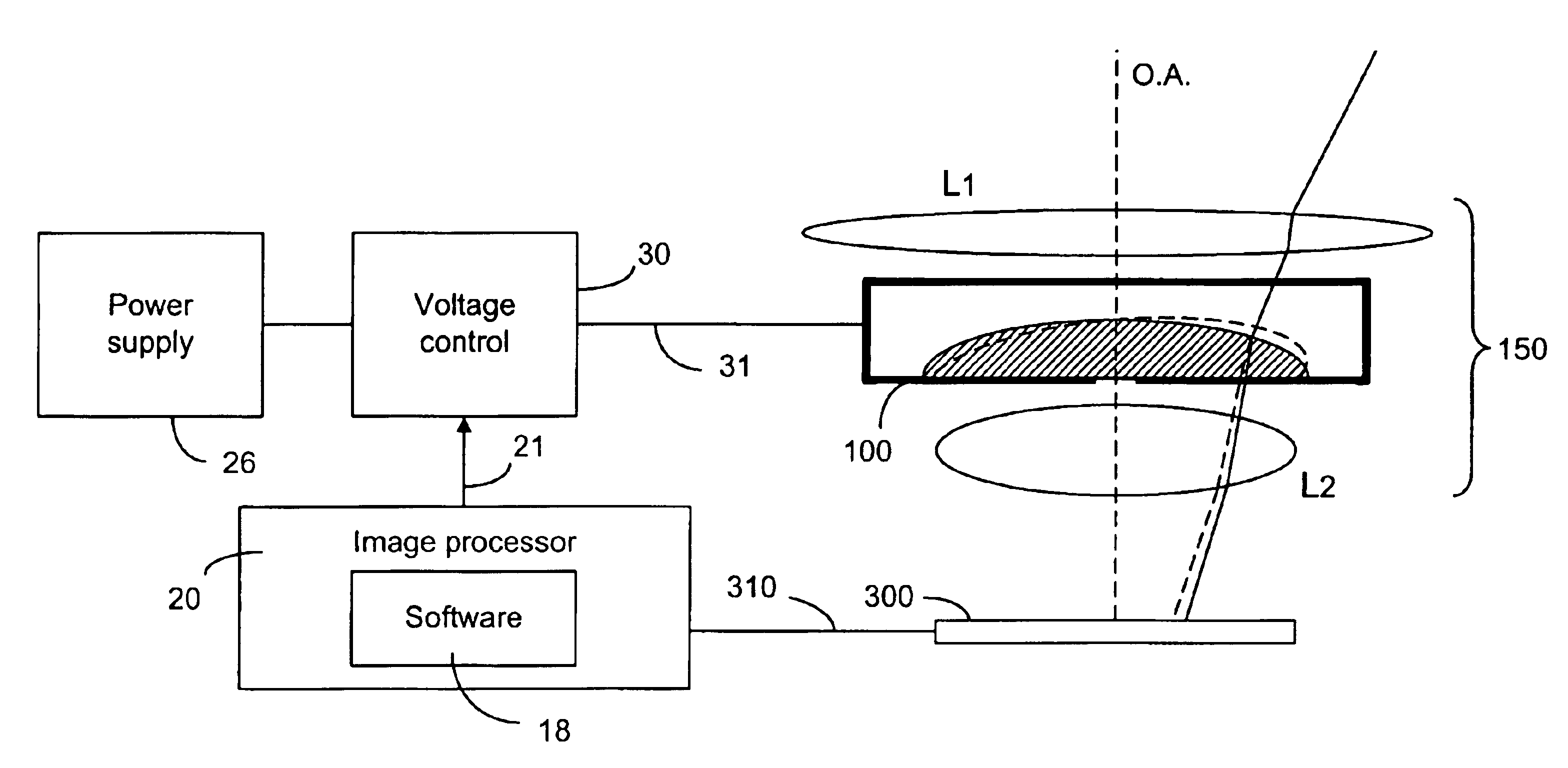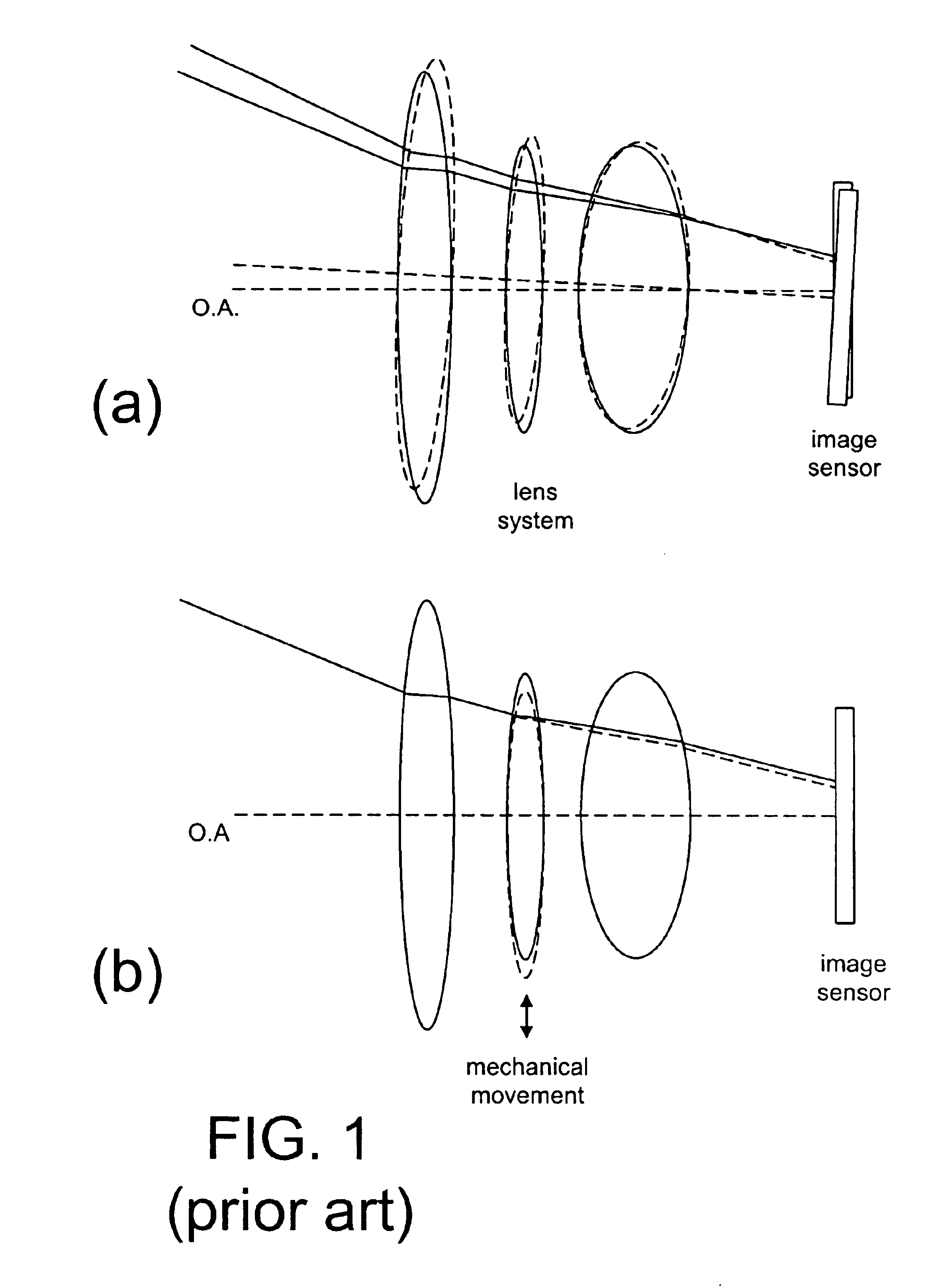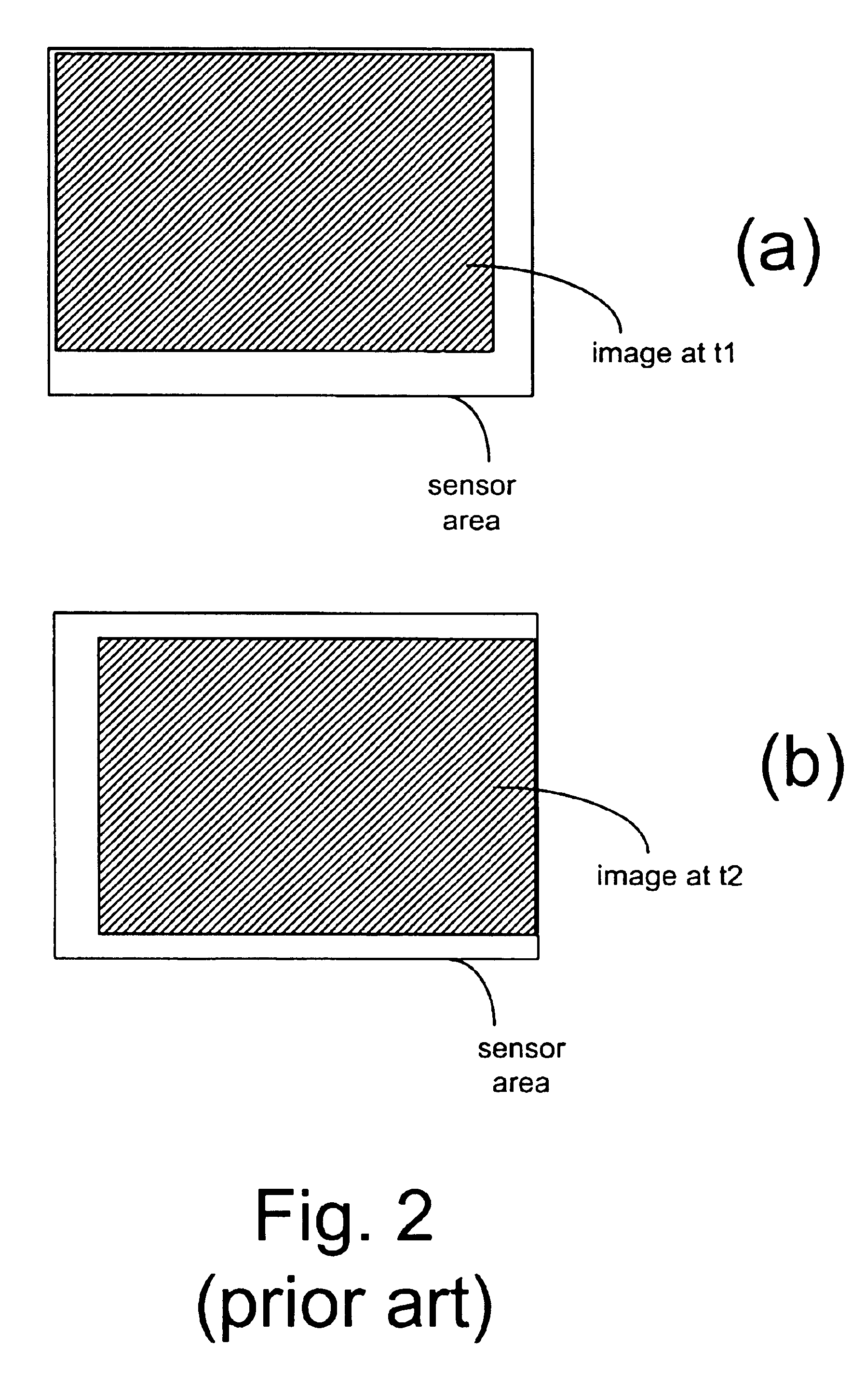Method and device for lateral adjustment of image
a technology of lateral adjustment and image, applied in the field of optical components, can solve the problems of inability to use software to achieve image stabilization, inability to use software, and inability to achieve the effect of lateral adjustment,
- Summary
- Abstract
- Description
- Claims
- Application Information
AI Technical Summary
Benefits of technology
Problems solved by technology
Method used
Image
Examples
Embodiment Construction
[0073]The present invention uses a liquid lens for image shifting. A voltage control system is used to deform the liquid lens in an asymmetrical way. The present invention uses electrowetting (EW) technology to provide the required liquid lens. In EW technology, a droplet of liquid is placed on a substrate to function as a lens. The contact angle of the droplet is usually a function of the surface tension of the liquid under the influence of the surface properties of the substrate. When an electric field is applied to the liquid droplet, the electric field modifies the surface tension at the liquid-solid interface, causing a change in the contact angle (see FIG. 3, contact angle is changed from θ to θ′). The change in the contact angle causes a change in the surface curvature of the droplet.
[0074]EW technology is known in the art. Kroupenkine et al. (EP 1 271 218 A1) discloses disposing a liquid droplet on a substrate as a liquid lens having a focal length and applying a voltage on ...
PUM
 Login to View More
Login to View More Abstract
Description
Claims
Application Information
 Login to View More
Login to View More - R&D
- Intellectual Property
- Life Sciences
- Materials
- Tech Scout
- Unparalleled Data Quality
- Higher Quality Content
- 60% Fewer Hallucinations
Browse by: Latest US Patents, China's latest patents, Technical Efficacy Thesaurus, Application Domain, Technology Topic, Popular Technical Reports.
© 2025 PatSnap. All rights reserved.Legal|Privacy policy|Modern Slavery Act Transparency Statement|Sitemap|About US| Contact US: help@patsnap.com



